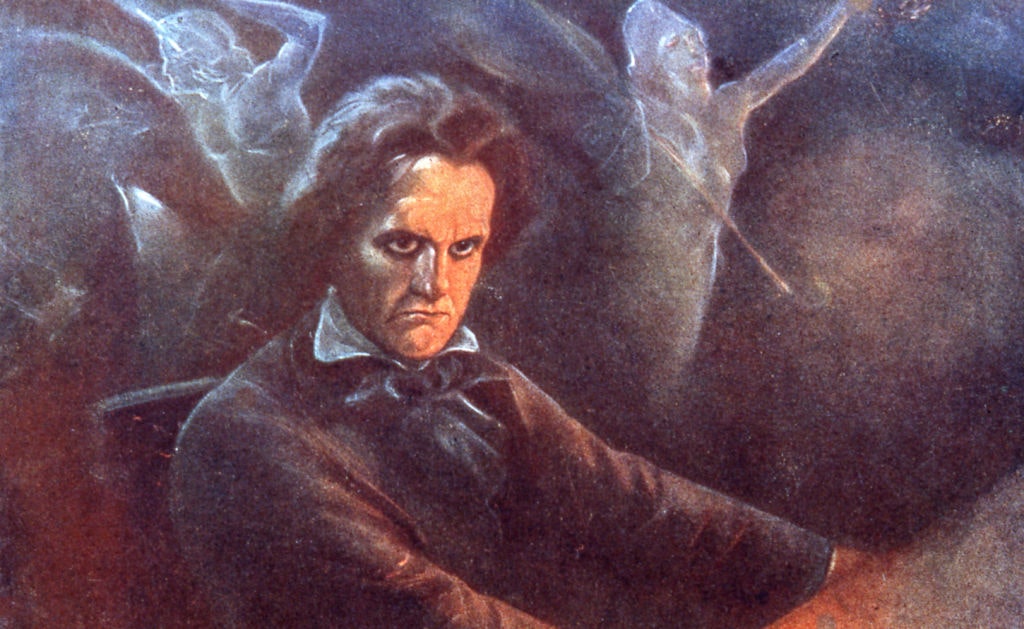Take the Bizkit
How Woodstock ’99 foreshadowed the MAGA masses of 2016
This article is taken from the October 2022 issue of The Critic. To get the full magazine why not subscribe? Right now we’re offering five issues for just £10.
It’s not often that cameras capture the exact moment a musical subculture implodes, but if you watch the Netflix documentary Trainwreck: Woodstock ’99, you can see it happen during Limp Bizkit’s set from day two of the festival.
Singer Fred Durst is pacing the stage, wearing his signature baseball cap and looking like he always did — which if you liked him was “thug king of the skate park”, and if you didn’t was “overgrown toddler with a goatee”. The band is churning through “Break Stuff ”, and Durst takes the middle eight to address the audience.
Woodstock ’99 was a study in disaster: by Saturday, the crowd was overheated, dehydrated and living in a trash pile
This is an audience that has already come close to riot the night before during the set of another nu-metal band, Korn. Woodstock ’99 was a study in disaster: price-gouging catering plus desperately inadequate site management meant that by Saturday, the crowd was overheated, dehydrated and living in a trash pile.
There was a perfectly logical reason for Woodstock ’99 to impose sub-prison conditions on the paying attendees, and it was this: money. Every decision that was made up to the moment the gates opened had been about maximising profit. In the organisers’ plans, the Woodstock crowd would trundle through the weekend as a group of ideal consumers, uncomplainingly dispensing money through the closed economy of the festival.
But these were not ideal consumers. These were kids — and not just kids, but mostly teenage boys. There’s a theory, often advanced in relation to the Arab Spring, that young populations are inherently volatile. The lower a country’s median age, the more primed it is for violent revolt. A music festival, by the nature of its demographics, is primed for uprising.
And there was one more unconsidered variable. In the documentary, promoter John Scher says, “We didn’t take into account what a jerk Fred Durst is.” This is pretty rich for someone who made many of the decisions that cursed Woodstock ’99, but you have to concede: he has a point.
Even through a screen and twenty-plus years on, you can feel the sparks crackle when Durst starts talking to the audience. “Time to reach deep down inside, take all that negative energy, and let that shit out of your fucking system,” he says. “Now when this song kicks in — I want YOU to kick in!” And the crowd goes off .
The crowd attacked the soundtower in the middle of the field, trying to shake the whole structure down. The engineers had to be evacuated: recalling it for the camera, they still sound traumatised.
The corollary of this was that those who weren’t disgusted were devoted
Missiles were flying. Bodies were trampled. “It was fun at first and then it turned out to be like, I gotta get out of here … I really thought I was gonna die there,” recalls one of the attendees, still somehow smiling the dazed smile of a person recalling a religious experience.
It’s weird to think of Limp Bizkit as inspirers of ecstasy, because there’s barely ever been a more prosaic band. Pretty much everything about them was ugly and dumb. Durst and his bandmates were through-and-through Florida blue collar, and they made songs for letting it all out on a Saturday night.
“Break Stuff ” was about getting mad and breaking stuff ; “Rollin’”, about listening to music and “getting retarded”. There is no subtext in a Limp Bizkit number.
Fine, whatever: there’s plenty of great music that deals with the prosaic. At least 50 per cent of delta blues songs are about the specifics of early 20th century agricultural production. Except, except, except: if you were living in the Mississippi Delta in the early 20th century, the survival of your milk cow was a life-or-death business, and those songs almost always take a third-verse turn towards divinity.
From the name down (which references the “soggy biscuit” game), everything about Limp Bizkit was designed to be repellent. “The name is there to turn people’s heads away,” said Durst. “Those are the people that we don’t want even listening to our music.” It worked: even the acts that Limp Bizkit claimed as influences didn’t want anything to do with them.
The corollary of this was that those who weren’t disgusted were devoted. Limp Bizkit was saying something real about their lives. Fans wore red baseball caps to show their loyalty. In contrast, the high-octane pop and glossy RnB that represented the mainstream seemed despicably fake.
Blue collar, red baseball caps, a commitment to breaking stuff — the Limp Bizkit fans of 1999 were a prelude for the MAGA masses of 2016
But it would be high-octane pop and glossy RnB that dominated the next decade, not Limp Bizkit-style idiot rock. Woodstock ’99 didn’t kill the old gods off all at once (Limp Bizkit went on having moronic hits into the noughties), but you can see the collective cultural shudder at the cretinous bacchanalia of the festival as the moment the mood changed.
There are few bands out there claiming to be continuing the Limp Bizkit tradition. But you can’t say they had no influence. Blue collar, red baseball caps, a commitment to breaking stuff — the Limp Bizkit fans of 1999 were a prelude for the MAGA masses of 2016. The Dumbass Spring took its time to get beyond Woodstock and take the country, but it got there in the end.
Enjoying The Critic online? It's even better in print
Try five issues of Britain’s most civilised magazine for £10
Subscribe














